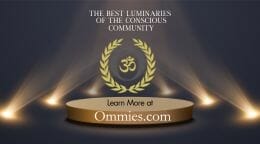Stephanie Kaza: Green Buddhism

Our big guy over here, Bill McGibbon, who founded www.350.dot.org. He was a colleague of mine in Vermont, and back in the early 2000s, he thought, “Why don’t we just have a climate march? It will be small, it’s Vermont, but let’s just do it.” So, he led this little group from Middle Bury up to Burlington and, when we got to Burlington, which is where my University was, we had all the local politicians come and sign a little statement: “I will pay attention to Climate Change.” We thought it was huge, with about 1,000 people. Now, look at where things are. Millions marched a few weeks ago for the Climate Strike. So, anybody, in any position, can just talk about it and say: “I heard on the news” or “The local Bus Company is now running that bus every 15 minutes. Maybe I’ll try that.”. Or, “I just heard about Meatless Mondays. Maybe I’ll try that.”
It’s the combined, small efforts that will help, but honestly, Climate Change won’t really be turned around by individual efforts like this. That’s a hard thing to recognize, but ultimately, it’s going to mean laws, and regulation, and big-scale changes, big business incentives, big shifts in energy infrastructure. Those are things we can’t do as individuals, that really requires a much bigger scale of effort, but we can encourage those choices where they’re happening. So, if your local power company is trying to change their mix from coal or more polluting forms of energy to greener forms, you can support them. You can say, “Way to go, that’s going to be good.” So, I’m really big on talking about it. Even my own little Buddhist sitting group is now talking about Climate Change, and one of the people goes and sits on a corner in downtown Portland and says: “Want to talk about Climate Change, talk to me.” So, I think that’s a really good place to start.
As far as specifics, it is true that eating meat is one of the larger energy consumers on the planet, so if you cut down your meat and eat more vegetables, you’re likely to have made a little bit of difference in carbon emissions, but that’s also true about transportation. Transportation choices are one of the most important choices you can make right now. About a third of the carbon emissions come from transportation. So, just choosing how many cars you own, how many miles you drive, how you get around. Do you ride a bicycle? Can you walk? All those things will help make a difference and will support the cities that are way ahead in making some of these transportation changes. It is very exciting about bike paths and electric vehicles and buses, and so on.
So, I think that things to do are all around us, but staying close to the heart is very important here. Staying open to the difficulty, to the call for a compassionate response, and just being willing, just to cultivate that. That’s what I tell people.
Sandie Sedgbeer: Going back to the non-dualistic thinking that we discussed at the beginning. It is a lot easier, I think, for people to grasp that an animal or a tree is not separate from us and maybe change the way they relate to something they didn’t like before – like spiders, for example. When it comes to other human beings that aren’t behaving in a very nice way, it’s much harder to apply this non-dualistic thinking. People are getting very angry…with the US Government, the fossil fuel companies, with anybody who they believe is contributing to the problem. What can we learn from Buddhism about cultivating compassion in those circumstances?
Stephanie Kaza: You have really identified something so important now. This kind of divisive, free-flowing anger and rage. It’s so harmful to human relations, and it makes it so much more difficult to do the things we need to do to take care of the planet, so we can continue to live here. Someplace to start with compassion is cultivating equanimity. A sense of stability. Anywhere that’s already somewhat stable is a really important island for that cultivation of compassion. So, that may be your own home, where you know things operate well. You can have three meals a day. It’s warm, the bills are paid, you’re kind to your partner. That kind of equanimity and stability is really important in a society where people are throwing a lot of tough things at each other. So, that’s one aspect of this, and that’s seen as one of the highest Buddhist virtues, equanimity. It’s seen as a way of offering love to the world without being too flamboyant about it. Just staying very steady.
The compassionate side means trying to find that horrible behavior inside yourself. Understanding that it has a root cause. That it exists in all human beings, and you may be choosing not to act on it, but somebody else is feeling something similar and acting on it. So, rather than separating, isolating, and condemning, understanding that we’re all made up of the same biological urges and some people are under more pressure than others and less able to restrain those impulses. Cultivating equanimity provides a kind of buffer zone, some margin for that acting out, and it can be a very proactive thing to do, to say: “No, we will eat meals at the same time every day.” Or, “We will act this way in our household or at community meetings, or in the workplace.”
So, I think of a Buddhist Green Practice Path as being a little island of safety, even if it’s difficult, but a place that helps others relax. That you’re always thinking it’s a way of serving other people so that we all have a better chance of living successfully on this much more fragile planet than we realize.
Sandie Sedgbeer: If you had to distill everything you’ve accomplished in your life, the things you’ve learned, experienced, taught. All the appellations that have been applied to you. How would you most want to be remembered? Would that phrase “Lover of Trees” be the thing that would remain at the top of the list?
Stephanie Kaza: It just might. I’ve already figured out the tree that means the most to me where I would like to have my ashes placed. So, I think the “Lover of Trees” is a coded way of saying “Lover of Life” and “Lover of all forms of Miracle.” From the beautiful constellations in the sky to the changing phases of the moon, to the cycles of life across the year, and all the beings, human, plant, fungi, and otherwise that inhabit this miraculous planet.
Sandie Sedgbeer: As I said before, your book touched me on so many levels, I didn’t know where I would even begin as there was so much, I wanted us to talk about. What settled everything, for me, was that phrase, “Lover of Trees.” I thought ‘right, there is a place to begin.’ Because when you learn about trees, and you really understand your connection to all beings, everything else falls into place.
Stephanie Kaza: I do talk about green wisdom sources and, of course, trees are one of the big ones for me, and there you are in the UK where there’s a long, long, centuries-old tradition of trees like a green wisdom source. So, when your own culture offers that up and makes it an easy place to go for green wisdom, there are many stunningly majestic and amazing trees in every neck of the woods. I encourage everyone to go out and meet a new tree.
Green Buddhism by Stephanie Kaza is published by Shambhala Publications Inc. and for more information on Stephanie Kaza and her work, visit www.stephaniekaza.com
A veteran broadcaster, author, and media consultant, Sandie Sedgbeer brings her incisive interviewing style to a brand new series of radio programs, What Is Going OM on OMTimes Radio, showcasing the world’s leading thinkers, scientists, authors, educators and parenting experts whose ideas are at the cutting edge. A professional journalist who cut her teeth in the ultra-competitive world of British newspapers and magazines, Sandie has interviewed a wide range of personalities from authors, scientists, celebrities, spiritual teachers, and politicians.





